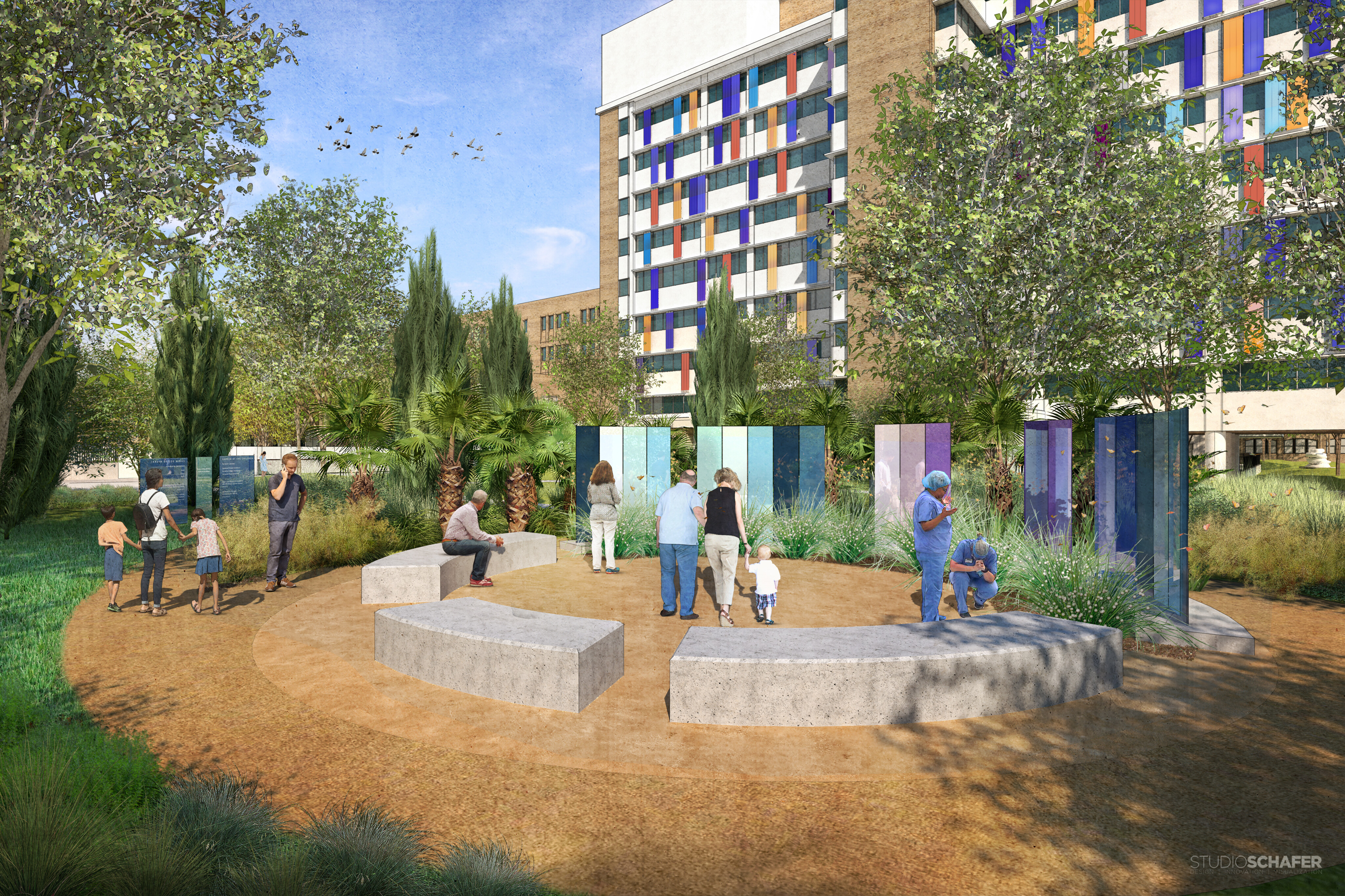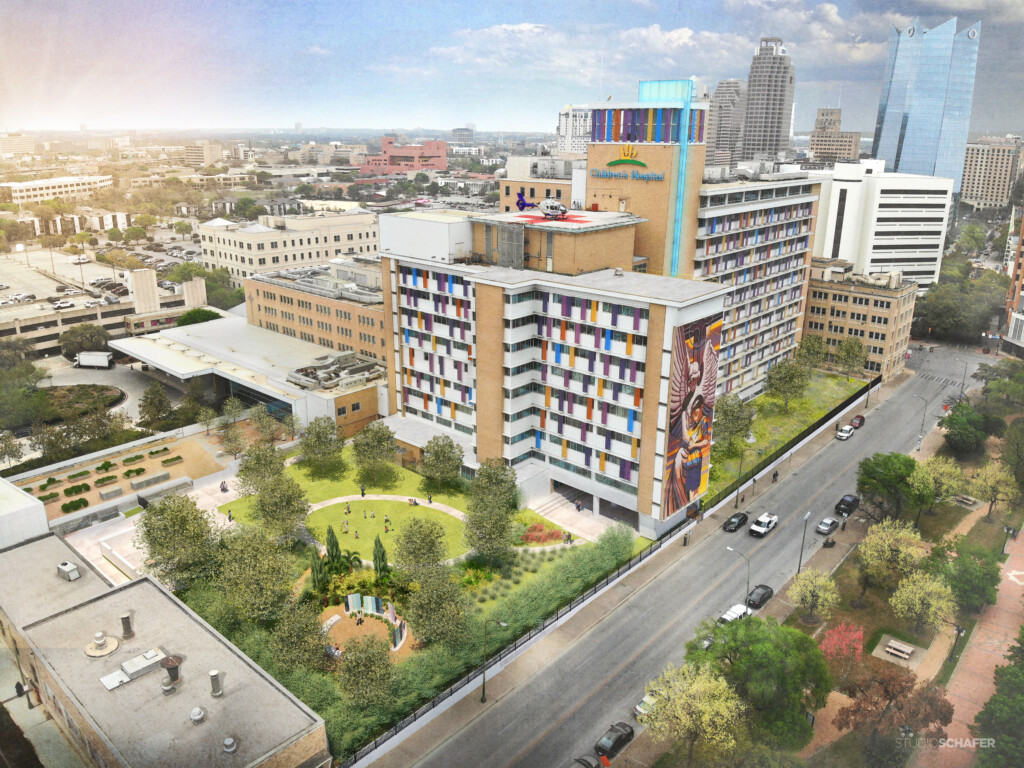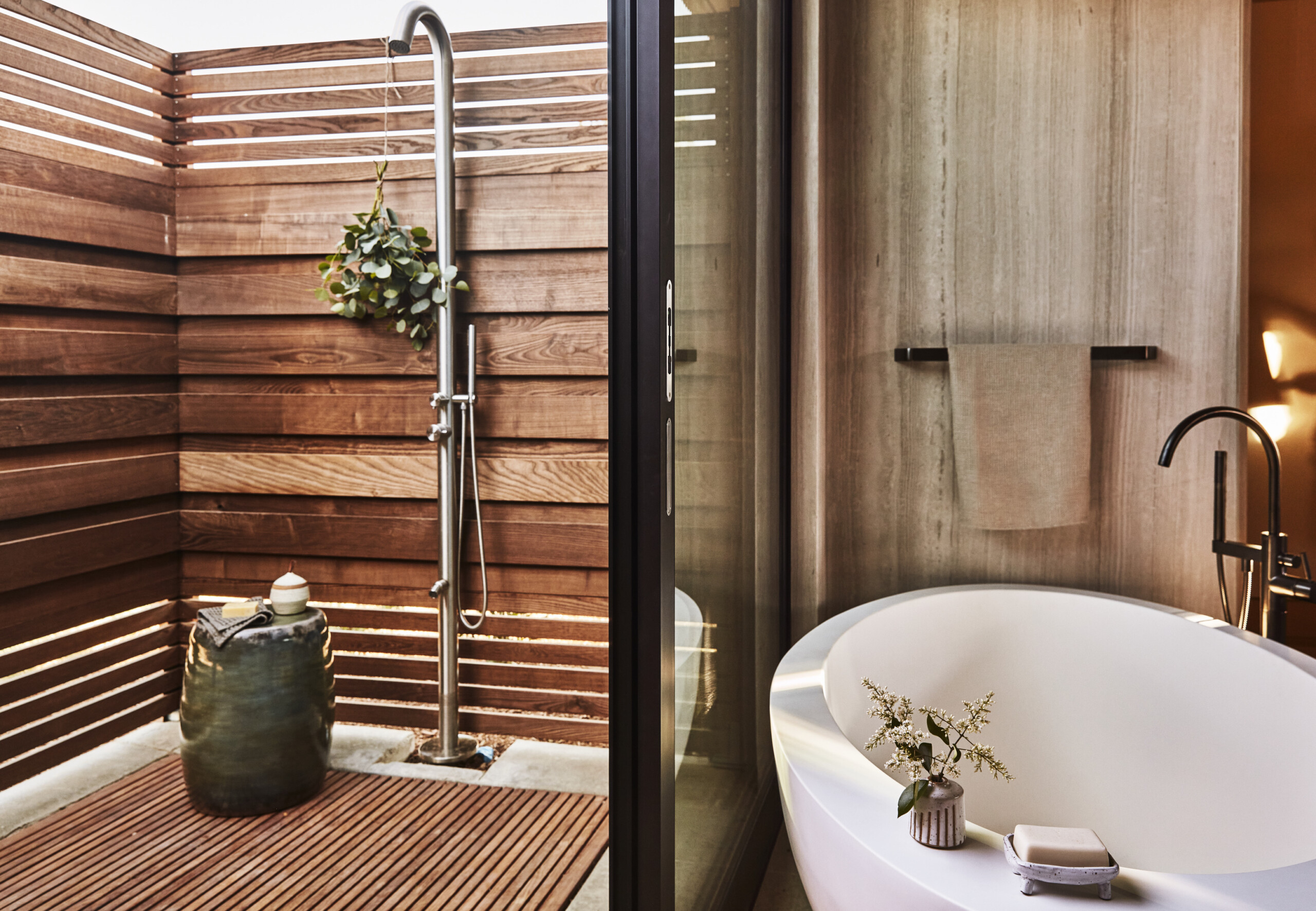
Verdant green lawns, blossoms in beautiful hues and fragrances, wildflowers and prairie grass, and abundant native trees greet patients, healthcare providers and guests at The Children’s Hospital of San Antonio. As part of the hospital’s multi-year renovation and modernization plan to transform the Children’s Hospital of San Antonio into a world-class pediatric hospital caring for children that suffer from the most life-threatening ailments, the newly opened gardens and outdoor spaces are designed to promote healing and enhance emotional and physical well-being.
El Jardin de los Niños (Garden of the Children), was made possible by a generous $20 million gift from the Goldsbury Foundation. The gift included $4 million dedicated to creating a sequence of four different themed gardens on the hospital campus, which spans nearly one city block in downtown San Antonio.
The Play Garden is designed especially for young children who are patients, or may have siblings in the hospital, where outdoor therapy, lawn games, or picnicking are perfect. With soft green grass and plantings to attract birds and butterflies, the lawn welcomes lively play and exploration. The small open space is surrounded by deciduous Mexican Sycamore trees, providing shade from the harsh Texas sun in the summer, yet allow warming rays to shine through in the winter.
Overland Architect Brady Dietert, who worked closely with Overland Principal Rick Archer, FAIA, on the project, noted the context of the Play Garden space. “The nine-story building with colorful glass panels that decorate the exterior of the building act as a backdrop to the lawn, uplifting and inspiring play and lightheartedness in the green grass,” he said.
Next, a Prayer Garden pays homage to the Catholic roots of The Sisters of Charity of the Incarnate Word, the non-profit organization that operates the hospital, and offers a peaceful setting for prayer and meditation. Rick Archer collaborated with Landscape Architect Catherine O’Connor, ASLA, Principal of Co’Design, on the overall layout and architectural arrangements and forms of the gardens.
One of the major goals of the project was to create and design a master plan that pulled together the existing site and create new forms that would unify the entire property,” said Archer. “Once that was in place, Catherine O’Connor added color, texture and interest through landscape elements that resulted in a harmonious campus.
A meandering, crushed granite path forms the perimeter of the Prayer Garden and encloses a circular gathering space at the garden’s center. Clear and colored glass panels—2’ wide by 7’ tall– frame the space and provide a translucent framework for observing the garden beyond, while limestone slab benches offer seating for quiet repose. Twelve of the glass panels integrate color in reference to the Twelve Disciples and the Twelve Tribes of Israel. The colors, too, draw inspiration from the Bible: from blue as a color of God’s glory in Judaism; light purple symbolizing advent to the resurrection and the hope of everlasting life; white as the light of God. O’Connor also chose plants and trees that were noted in the Bible. The plant palette features three palm species, Arizona cypress trees with their distinctive blue-green foliage, dwarf olives, and shrubs with soft-colored and scented blooms such as honeysuckle, iris, and sweet myrtle. O’Connor noted that the plantings, which integrate a variety of greens, leaf textures, and heights, will become more full over time, adding a sense of privacy to the sacred space. At night, the panels are lit with LED lights, changing the garden into an ethereal space of reflection.
Adjacent to the Prayer Garden, dedication panels of clear glass are etched with “Garden of the Children,” biblical scriptures, and names of Goldsbury family members, in both English and Spanish, honoring Goldsbury family members, for whom the gardens were built.

Near the new main entrance on San Saba Street is the Culinary Garden where irrigated planters overflow with herbs and fresh vegetables. Visitors can view the gardens through floor-to-ceiling windows in the adjacent hospital café as well as a dedicated space where dieticians share healthy recipes and cooking demonstrations. Tucked away in the back of the garden is a covered pavilion used for special events and gatherings.
From the Café, guests can step out onto an outdoor deck, shaded by Cedar Elms, where tables and seating encourage them to sit, read, enjoy coffee or lunch, and soak up the therapeutic elements of the landscape.
The only garden not accessible to the public is the Memorial Garden. During a full-scale renovation of the hospital in 2014, burial grounds of early settlers and indigenous people were discovered during construction. After meetings with descendant groups, they communicated they did not want the remains and grounds disturbed for reasons related to their spiritual beliefs. To honor their requests, the hospital created this special garden, which is a long, rectangular stretch of land blanketed with prairie grass, wildflowers, and Sycamore trees.
No digging was allowed out of care and respect for the remains. Soil was added, the landscape raised, and trees were planted in large mounds of dirt. A sizeable rock cairn stands tall to signify holy ground. An elevated concrete terrace overlooking the garden offers visitors intimate views and a place to connect with the natural space, and a historical plaque tells the story of the people who inhabited the area hundreds of years ago.
While visitors cannot access the Memorial Garden, patients have a view of the garden. The newly designed green space also opens up the exterior of the building to nearby Milam Park, making the hospital feel more inviting and integrated with the city.
Since the beginning of the project, Overland Partners has been in lock step with our mission and ministry of healing all children regardless of their family’s situation. This means treating the whole child – physically, emotionally, and spiritually while also supporting family members and caregivers through an incredibly stressful time. We turned to Overland for their experience with biophilic design and understanding the role nature plays in health and well-being. Especially during the past year, our appreciation for safe, accessible outdoor space has never been greater. The gardens at The Children’s Hospital are such an important asset to the healing process for our patients, families and staff.
— Cris Daskevich, CEO, The Children’s Hospital of San Antonio
Creating places that can’t be built by anyone else
…for anyone else.
